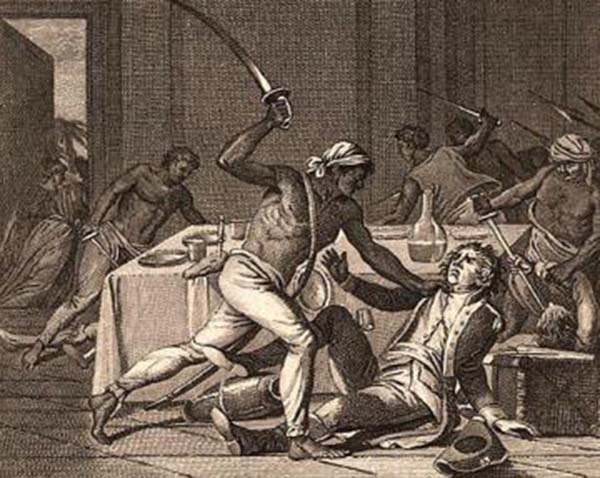
Caribbean slave owners kept careful watch for suspected slave rebellions and thwarted most very quickly, but the Coromantees and Maroons kept trying.
The Caribbean islands hosted some of the most violent slave uprisings in history and the only successful African slave rebellion in the Americas. Most revolts were limited to a single plantation, but others encompassed neighboring plantations or runaway slaves known as Maroons. Slave-owner vigilance, the threat of severe punishment, and lack of resources did not prevent African slaves in the Caribbean from plotting to overthrow the yoke of slavery.
Early Slave Revolt Conspiracies and the Maroons
The earliest Caribbean slave uprising occurred in Santo Domingo in 1522 on the plantation of Diego Colon and another occurred in Puerto Rico in 1527. These early revolts were the beginning of the Maroons, hidden communities of runaway slaves the Spaniards called Cimarrones. For the next two centuries, they played a key role in instigating and participating in Caribbean slave rebellions.
Barbados, Antigua, Jamaica – 17th Century Slave Rebellions and Plots
As one of the earliest plantation-society islands, Barbados first utilized indentured servants for sugar plantation labor. According to Jan Rogozinski’s A Brief History of the Caribbean, there were six documented conspiracies for slave revolts in Barbados that were never actually acted upon. The first, in 1649, was a cooperative plot between white indentured servants and newly enslaved Africans for a simultaneous uprising. During this time, thousands of Irish Catholics indentured against their will in Barbados sought their freedom as well.
Early on there were roughly equal numbers of whites and slaves in Barbados, but by 1684 the slave population was more than twice that of whites. While attempted revolts in 1675, 1683, and 1686 involved newly arrived African slaves known as Coromantees, plots in 1692 and 1701 involved greater numbers and the Creole elite. An actual revolt would not take place, however, until 1816 – Bussa’s Rebellion. Similar patterns emerged in Antigua and Jamaica.
Maroons, Coromantees, and the Goals of Early Slave Revolts
Before the second half of the 18th century, rebellious slaves were led by charismatic African leaders who simply sought to restore their own freedom. Many of these were from the Coromantee kingdoms in Ghana that supplied Europeans with other enslaved Africans. These Akan-speaking tribes were particularly valued by the planters for their strength and endurance, but were also the most likely to rebel.
Initially, those who rebelled simply ran away, attempting to recreate their West African way of life. Maroons attempted to create separate free societies but were persecuted and returned to slavery more often than not. Unable to recreate the societies of their West African homes by escaping, enslaved Africans then attempted to destroy the society of their captors. If they could not create a society alongside the whites, then the logical recourse was to replace it.
In the mid-18th century more and more slave revolts occurred in the Caribbean. Two came very close to succeeding. On the Danish Island of St. John, African slaves captured the fort in 1733 and held it for six months. In Jamaica, Tacky’s Revolt involved as many as 30,000 slaves, lasted over a year, and resulted in extensive property damage. The only slave rebellion to result in success, however, was the Haitian Revolution. Conspiring to revolt happened much more frequently than actual uprisings.







